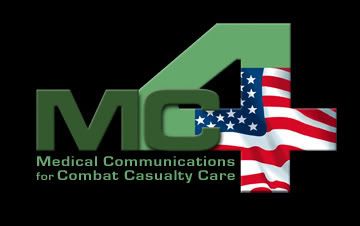Wednesday, May 9, 2007
A Sailor's Perspective of MC4 -
HM1 Thomas L. Mendenhall
14th Marine Regiment Medical Department
I was deployed with my unit to Kuwait in 2003 during the first rotation supporting Operation Iraqi Freedom (OIF). During my tour of duty, I was stationed at Expeditionary Medical Facility-Dallas (EMF-Dallas), which operated all the clinics and troop medical centers (TMCs) in Kuwait.
When my unit arrived in Kuwait, we received MC4 equipment to record medical data. At first we were very wary of Composite Health Care
System II-Theater [CHCS II-T (AHLTA-T)] because MC4 is an Army system. Besides the fact that the system was in its infancy, the system was new to us and we found it confusing to use.
Shortly after our arrival in theater, we attended a 4-hour class on how to use the system, but this did very little to help due to the tremendous amount of information that was covered. We might have grasped the system a little better if we had been given student guides, but since we were in a combat zone, I can understand why they were not provided.
One of the first difficulties we experienced with MC4 was getting logon permission into the system. Even our IT personnel were new to the system. They were still learning how to get personnel logged in and how to unfreeze individual passwords. I guess that happens with most new network-based computer systems.
After approximately three weeks, we became better acquainted with the system. We mainly used MC4 for the standard Subjective, Objective, Assessment and Plan (SOAP) medical report functionality and to request labs. I realize that we could have used MC4 for additional uses – including readiness data and pre- and post-deployment health assessments – but we did not use it to its fullest capability.
If my unit used the system to its full potential, it would have made pre- and post health deployment assessments a little easier. It took us a while to learn how a non-provider could close a SOAP note so it could be later signed by a provider.
In time, we became more comfortable with the technology. It was great to print out neat, readable SF600s – chronological record of medical care – and SOAP reports in the desert. Not only were we able to give the Soldiers, Sailors and Marines a copy of their medical records, the electronic documentation ensured that the records would not get lost in the fast moving environment of Kuwait. This is important since units are continuously moving through the region.
Another aspect of the MC4 system that we were impressed with was the anatomic body within CHCS II-T (AHLTA-T). It was good to be able to click on areas of the body to designate wounds.
I think the MC4 handheld would be a tremendous resource for Marine corpsmen and invaluable to have during drills and maneuvers. I'm a believer in training like you want to perform. Having the systems during training exercises would only increase familiarity with the system and makes its use second-nature.
Many times a Marine corpsman will be out in the field with their unit and is the only person to document and apply medical treatments. Being able to legibly and accurately document any ailment – from minor rashes to major wounds – would be great. Additionally, the handheld would reduce the amount of gear to be carried into the field and improve documentation.
Then when the corpsmen return to the medical facility, the handheld is synched with laptop and the data is entered into CHCS II-T (AHLTA-T) and any additional documentation can be added to the record. At that time, if hardcopy documentation needs to be kept, the records are printed out and placed in individual folders.
My only concern would be that the data entered into
CHCS II-T (AHLTA-T) by the corpsmen could be merged into or accessed by the Medical Readiness Reporting System (MRRS), the Internet-based system currently used by the Marines.
Subscribe to:
Posts (Atom)
